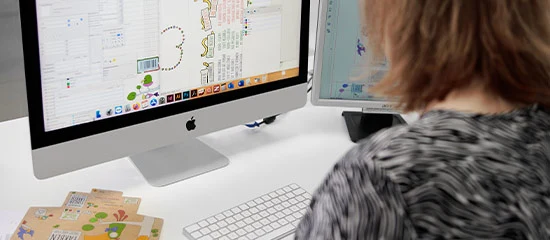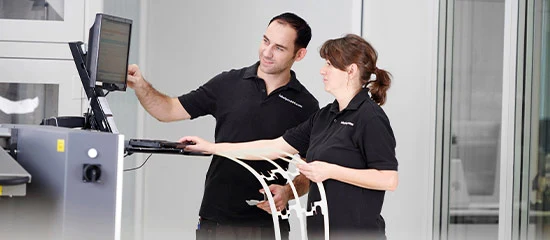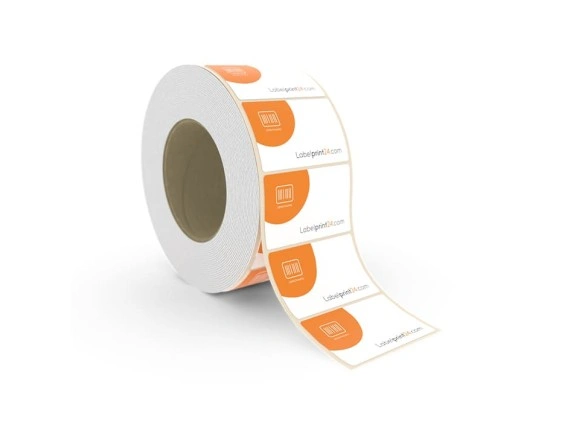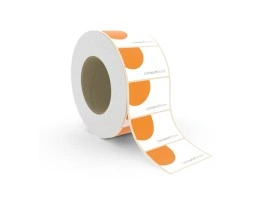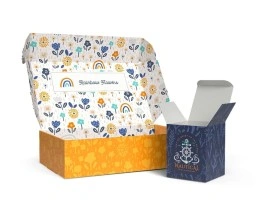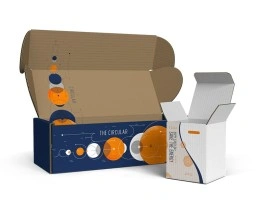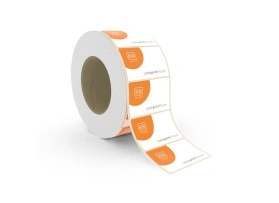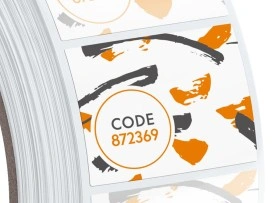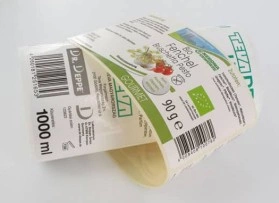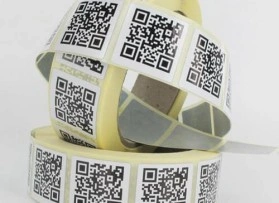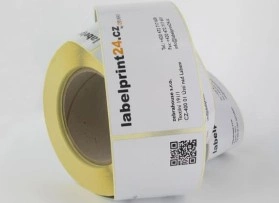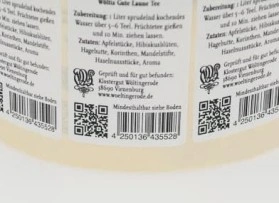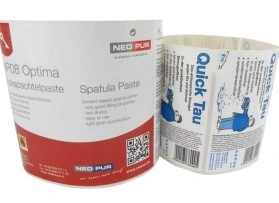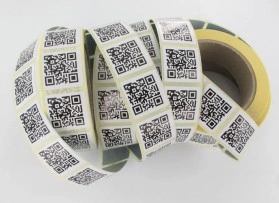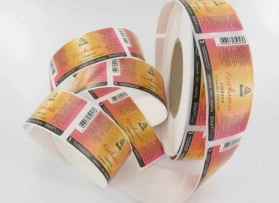Barcode / QR code / Numeric labels
Are you looking for a label that contains all the information you need to ship your products? Your motto is stick it on, scan it and you're done? Order Barcode Labels, Numbered Labels and QR Codes from Labelprint24.com!
- Razor-sharp print image and reliable legibility
- Many materials from Foil and Paper
- Delivery on sheet or roll
Discover more Labels of Labelprint24.com!
- Production TimeFrom 48hr
- MaterialFilm / Paper
- Size100% customizable
- Finish OptionsFilm / Varnish
- Finish OptionsFilm finishing / Varnish / Laminate
- Printing technologydigital and flexo
Barcode labels: a product goes around the world
Where consignment notes and commodity lists were once laboriously attached or prices painstakingly entered by hand in cash registers, today it just takes a quick click with the hand scanner on a barcode label to access every bit of relevant information about a product, such as price, address, or manufacturing date, and store it digitally.
Have a look at our homepage. Of course, we can also print many other types of labels.
The advantages of labelprint24 barcode labels at a glance
- a variety of materials, adhesives, and colours
- sharp print and reliable legibility
- also suitable for thermal transfer printers
- custom digital printing
- available in sheets or rolls
Barcode sticker materials
Labelprint24 can print your barcode and QR code labels or design barcodes on a variety of materials, including paper, PP film, and fluorescent or metallised paper. Label adhesives can be either permanent or removable. In order to ensure a completely secure readability of electronically encrypted information, we guarantee a clean, sharp printing of the lines and bars.
Printed barcode and EAN labels are available in complete label rolls with sequential numbering. Thanks to our high-quality digital printing processes, it's readily possible to custom print every single label. Barcode labels on PP films can be printed on-demand with barcodes and numbers using suitable thermal transfer printers.
Calculate your individual barcode labels or QR code labels online with our calculator. After just a few clicks, you will receive a personal offer perfectly suited to your needs.
What types of barcode labels are there?
Labels with a one-dimensional barcode
Labels with a one-dimensional barcode are conventional barcode labels. The information here is coded only on one plane, perpendicular to the dashes. Encoding is the information from which the barcode was generated. The codes mostly used in trade and transport logistics are EAN13, EAN 8, and EAN 128. A barcode contains the following information for unique identification: country code, manufacturer number, article number, and check digit.
Labels with two-dimensional or matrix barcodes
The two-dimensional barcode or matrix barcode encodes information both vertically and horizontally. 2-D barcodes are capable of transmitting much more information than one-dimensional barcodes. QR codes are the most common type of 2-D barcode. Originally developed for Toyota, these codes are mostly used to forward users automatically to a URL when scanned by a smartphone.
Labels with three-dimensional barcodes
Three-dimensional barcodes (3-D codes) are used when, in addition to the surface of the 2D barcodes, colour tones and brightness are also used to encode the information.
Labels with four-dimensional barcodes
In 2007, professors at Bauhaus University Weimar presented a four-dimensional barcode: coloured, animated barcodes. They can encode and transmit significantly more information than conventional 2-D or 3-D codes. The corresponding scanners will be integrated everywhere in the future. Built into websites and public displays such as ATMs, public transport screens, or television broadcasts, these 4-D codes will be able to provide users with a wealth of additional information anywhere, any time. A smartphone records a short animation sequence, then decodes the data contained in the matrix. However, animated 4-D codes are unlikely to fit on labels.
More information about barcode labels
Barcode labels are becoming increasingly important for the identification of products, because technical innovations, such as ubiquitous internet access and the advent of smartphones are revolutionising their potential applications. In particular, smartphone apps are bringing about a fundamental change in the use of barcode labels.
Why are barcode labels so essential to goods logistics?
When manually entering long sequences of numbers, human error is almost inevitable: the longer the sequence of numbers, the higher the probability of mixing up their order or entering them incorrectly. As a result, the entire encoding would no longer be readable or would refer to another object. An example: even if you once knew your account number by heart, hardly anyone can remember the complete IBAN for their bank account. You surely know what it feels like when you've entered a wrong number when arranging a bank transfer. Today, this practical problem is solved by digital-optical data input, such as barcodes or fingerprints.
Another important advantage of barcodes is that they can be read quickly: just a short scan and the data is captured. This often takes place fully automatically in logistics, assuming, of course, that there are complex reading devices running in the background. Especially when transporting goods, saving every second can count.
A further advantage of barcode labels is the low investment cost to install such coded systems. The barcode labels, the reader, and a barcode printer are relatively inexpensive. Barcodes can also be printed on blank labels with conventional printers.
General advantages of labels with barcodes
- avoid input errors
- high reading speed
- fully automatic data acquisition
- inexpensive
Wherever there's light, there's also shadow. Classic barcode labels also have disadvantages that can be avoided by using other, more complex coding systems. Like most labels, barcode labels are sensitive to external environmental conditions. They can get dirty or wet.
To automatically read the barcodes, the products marked with barcode labels must be positioned exactly on the reader or cash register. In addition, despite the coding, relatively little information can be stored in a simple barcode, otherwise it would simply become too long.
Here you will find information on REA encoding checks done at labelprint24.
Visual contact is required to read barcodes. RFID labels can replace barcode labels because no visual contact is required to scan them. However, RFID technology is still too expensive to replace barcode labels at the product level, but RFID tags are gaining ground in logistics and internal goods transport.
Disadvantages of barcode labels
- only relatively small amounts of data can be encoded
- danger of soiling and wetness
- visual contact always necessary
- exact positioning required to read
Barcode labels: an important part of goods management
A typical example of this development is the retail trade: labelling with barcode labels, 2-D labels, and numbered labels developed in the retail trade from the mere indication of legally prescribed data (e.g. best-before dates for foodstuffs) to an integral component of the supply chain (to ensure full shelves). The barcode label tells the inventory management system the identity of the product and where/when it was produced. If a product needs to be recalled, the barcode label gives the manufacturer a chain of evidence that allows prompt recalls to protect consumers whilst minimising the damage to the brand reputation.
Knowing what you buy!
In a further evolutionary step, customers can now find out more about the history of any product at the POS or at home by scanning the barcode label using a smartphone app. The range of possibilities for information transfer and marketing, especially, is breath-taking. Sweepstakes, social media networking, and explanatory videos can already be called up directly at the POS. Not to mention measurements of individual purchasing behaviours.
At the supermarket, for examples, customers can already choose among numerous apps which turn their smartphones into barcode or QR code readers. The Barcoo and Marktjagd apps from industry leader Offerista Group allow customers (and retailers) to access all sorts of information about products they scan, from price comparisons to test reports and other detailed reporting. It is probably only a matter of time before these apps, in conjunction with barcode labels, also securely integrate a payment function and make standing in line at the cash register superfluous.
How barcode labels will change our lives
The barcode-reading apps are intended to advance the digital revolution in retail. To achieve this, app makers like Offerista are offering retailers and brands even more tools for digitalising local trade marketing with digital brochures, beacons, and geo-based push messages, all from a single source.
Geo-based services such as beacons can be used to verify whether customers go to the relevant physical stores and make their purchases there after leafing through digital brochures. Offerista's vision is to equip stores with transmitters that locate the visitor anywhere in the store and send location-based offers to their smartphones or tablets. Customers can use the beacons with Bluetooth smart technology to navigate their way through the shop.
The technology, which is already available on Apple devices under the iBeacon name, will also make automatic payment possible: PayPal has already paved the way with the PayPal beacon. This innovation connects the customer with the shop and allows automatic processing via PayPal without having to queue for the cash register. In a year or two, we may wonder how we ever managed to shop without barcode labels and beacons.
Happy birthday! The barcode is 40 years old.
Whether online or in person, customers today take advantage of a variety of shopping options, and expect a consistent brand experience in their purchases. Two inventions that have made this possible have survived to this day: the barcode and the barcode label.
On 26 June 1974, a pack of Wrigley's Juicy Fruit gum was the first article ever to be scanned at a supermarket checkout in the United States. A year earlier, the retail sector had introduced the GS1 barcode as the one and only uniform standard for the identification and tracing of products.
The barcode, placed directly on the product or attached to the product as barcode label, has since led to considerable efficiency gains in the supply chain, with 21% shorter lead times for warehouse operators, 42% lower costs for distribution centres, and 32% fewer cases of being out of stock for the retailer. Overall, barcode labelling results in savings of several billion euros, dollars, and yen in the retail sector year after year.
Meanwhile, thanks to e-commerce, the design and function of barcode labels has continuously evolved, allowing an ever-increasing amount of data to be stored and transmitted. Part of this is also due to taking advantage of innovations such as new barcode forms or the QR code. The QR code label(QR = Quick Response) consists of an array of black and white squares which, when read by a smartphone, discloses extensive, electronically stored information. The amount of information stored here can far exceed the information encoded into a barcode label.
Although the original barcode technology may appear simple to us today, when it was first introduced, it led to radical changes in the retail, warehousing, and logistics sectors.

